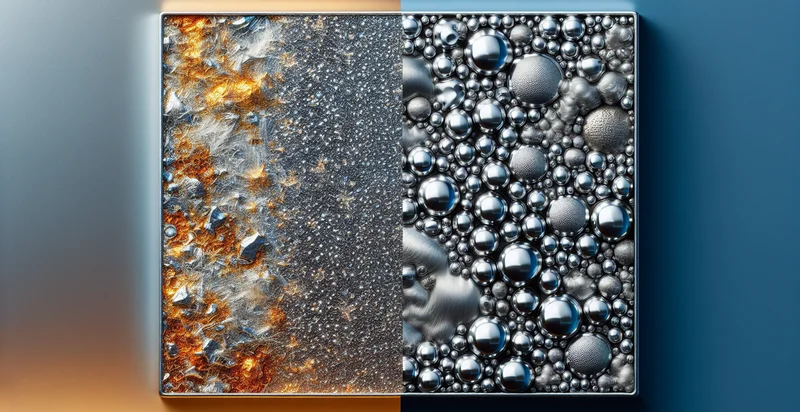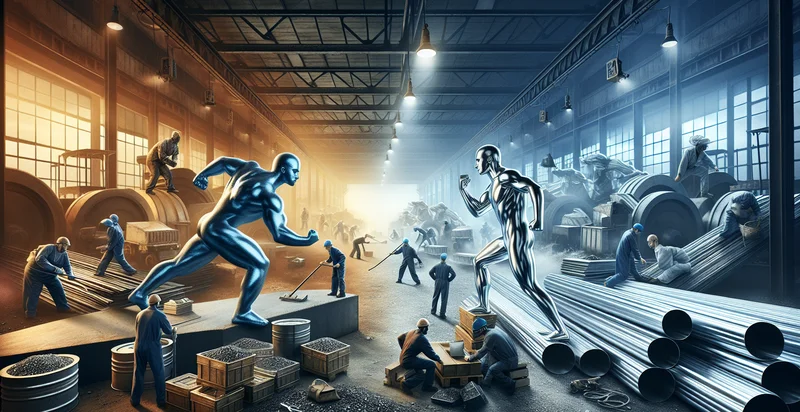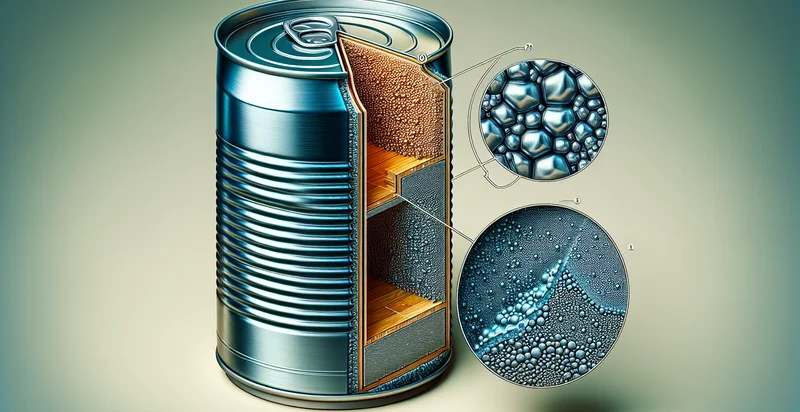Identify galvanized vs stainless
using AI
Below is a free classifier to identify galvanized vs stainless. Just upload your image, and our AI will predict if the material is galvanized or stainless - in just seconds.

Contact us for API access
Or, use Nyckel to build highly-accurate custom classifiers in just minutes. No PhD required.
Get started
import nyckel
credentials = nyckel.Credentials("YOUR_CLIENT_ID", "YOUR_CLIENT_SECRET")
nyckel.invoke("galvanized-vs-stainless", "your_image_url", credentials)
fetch('https://www.nyckel.com/v1/functions/galvanized-vs-stainless/invoke', {
method: 'POST',
headers: {
'Authorization': 'Bearer ' + 'YOUR_BEARER_TOKEN',
'Content-Type': 'application/json',
},
body: JSON.stringify(
{"data": "your_image_url"}
)
})
.then(response => response.json())
.then(data => console.log(data));
curl -X POST \
-H "Content-Type: application/json" \
-H "Authorization: Bearer YOUR_BEARER_TOKEN" \
-d '{"data": "your_image_url"}' \
https://www.nyckel.com/v1/functions/galvanized-vs-stainless/invoke
How this classifier works
To start, upload your image. Our AI tool will then predict if the material is galvanized or stainless.
This pretrained image model uses a Nyckel-created dataset and has 2 labels, including Galvanized and Stainless.
We'll also show a confidence score (the higher the number, the more confident the AI model is around if the material is galvanized or stainless).
Whether you're just curious or building galvanized vs stainless detection into your application, we hope our classifier proves helpful.
Related Classifiers
Need to identify galvanized vs stainless at scale?
Get API or Zapier access to this classifier for free. It's perfect for:
- Quality Control in Manufacturing: Implementing the galvanized vs stainless identifier in manufacturing plants can enhance the quality control process. This system can automatically classify and separate materials during production, ensuring only the correct type is used in assembly and reducing the risk of errors.
- Inventory Management: Businesses can utilize the image classification function to streamline their inventory processes. By automatically identifying and categorizing galvanized and stainless materials, companies can maintain accurate stock levels and quickly locate specific items, improving operational efficiency.
- Recycling and Waste Management: The identifier can assist recycling facilities in sorting metals efficiently. By distinguishing between galvanized and stainless steel, recyclers can optimize the recycling process and improve the quality of recycled materials, leading to better end-product value.
- E-commerce Product Verification: Online retailers can use this technology to verify product specifications before shipping. By ensuring that customers receive the correct type of metal (galvanized vs stainless), companies can enhance customer satisfaction and reduce return rates due to product mismatches.
- Construction Site Material Verification: Construction companies can deploy the identifier on site to ensure that only the specified type of steel is utilized in particular projects. This functionality helps to maintain compliance with project specifications and reduces the risk of structural failures related to material discrepancies.
- Educational Tool for Training: The classification function can serve as a training aid in educational programs focused on manufacturing and materials science. By providing real-time identification of metals, students can gain practical experience and better understand the properties and applications of galvanized versus stainless steel.
- Maintenance and Repair Operations: Service technicians can leverage this identification capability during maintenance tasks where the type of metal impacts repair strategies and materials used. Accurately identifying the metal type ensures that appropriate repair methods and components are implemented, leading to enhanced reliability and longevity of equipment.


